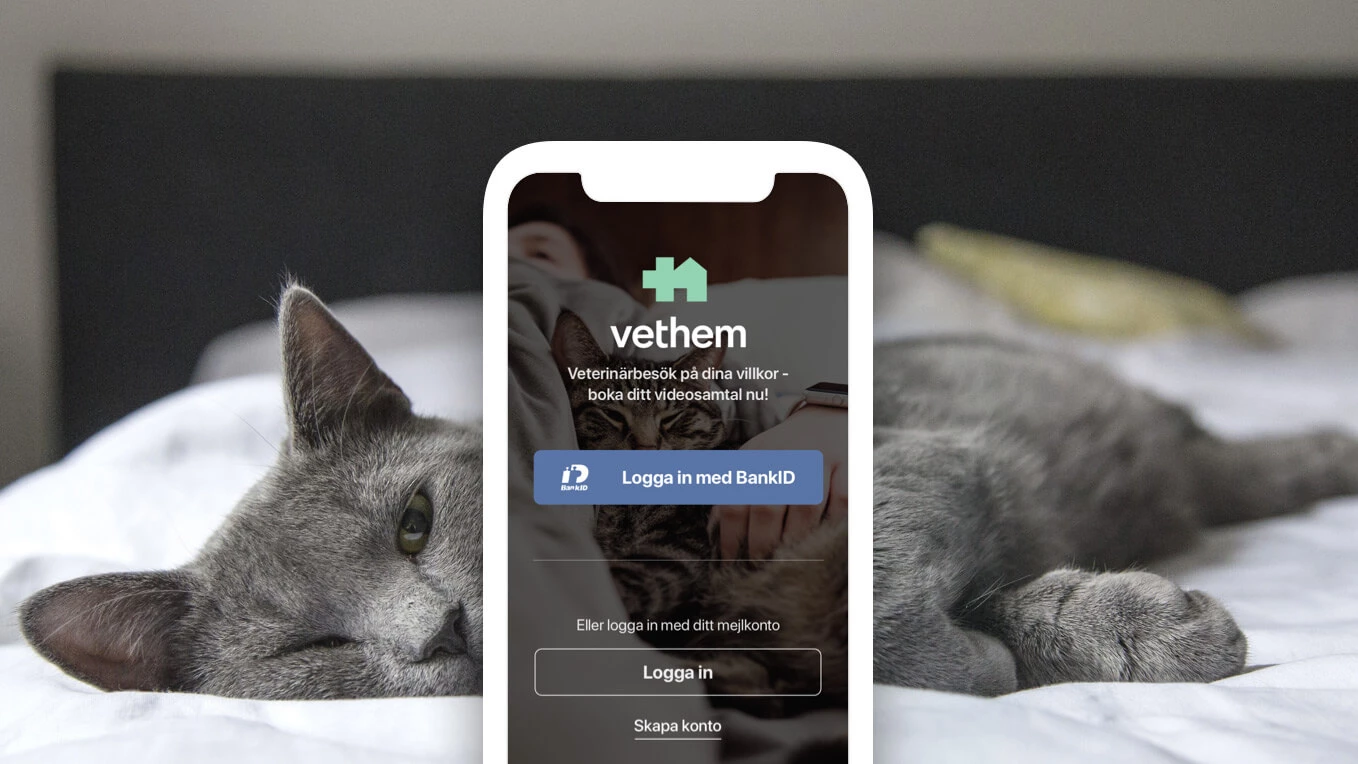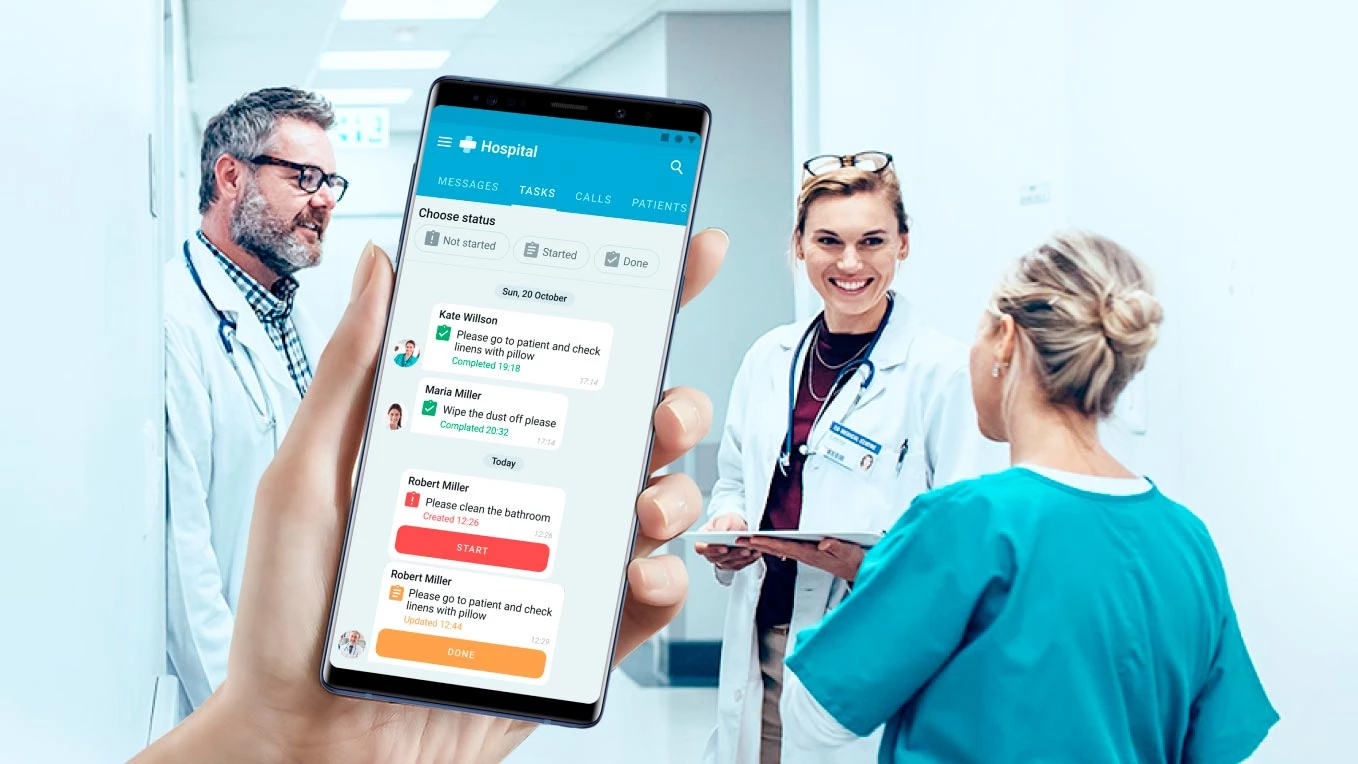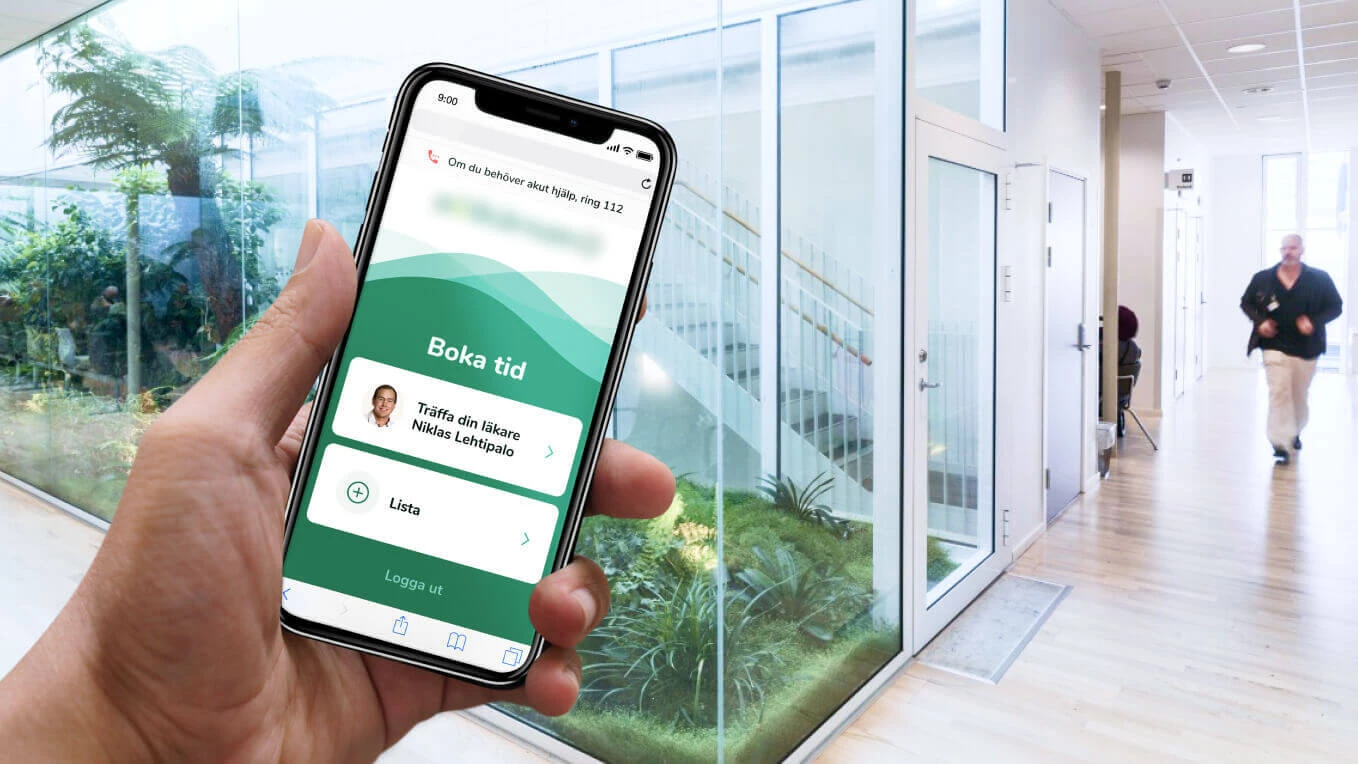A web app to share user experience of disease treatments

Task
Create a website that will have a clear UX to share experiences quickly and easily. It was also important to consider the interface of the site to inspire trust in patients.
The platform has to solve the following problems of patients:
- Chronic suffering from chronic sinusitis
- Lack of information about alternative methods of treatment (well-known methods have lost their effectiveness)
- Treatments are not recommended for each patient individually
- No mentions of side effects of different medicines
- People feel alone in their struggle with this disease
- Patients do not trust such services, because they usually advertise medicines for money
Solution
- To create a reliable resource that will unite patients and help them share their experiences
- Provide a list of treatments that have already helped other people
- Provide a list of alternative treatments that are not acceptable to talk about, but have proven to be effective
- Provide a list of commonly known methods that are ineffective
Importantly! All treatment methods on the platform are added by the patients, having received prior approval from the administrator.
Development
1. Lean Model Canvas
During the discovery phase, we completed the business model with the client, and deeply studied the problems of patients and competitors. We also figured out how to monetize this platform in order not to lose people’s trust.
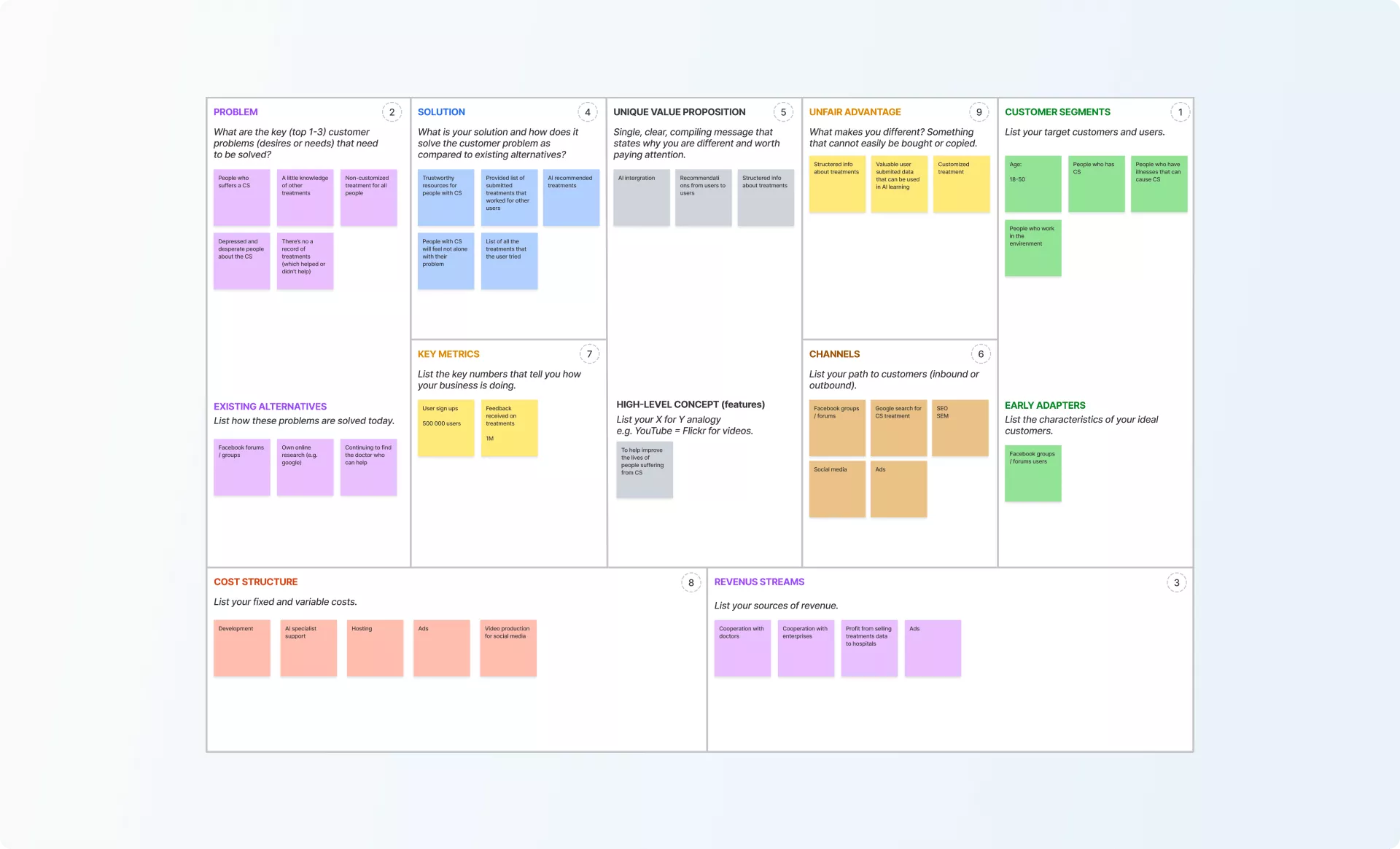
2. CJM
To get a result from using the service, the client must take several steps. These interactions should be predicted by the designer at the stage of CJM construction in order to make the design as clear as possible and to implement all the user's needs in the product. In addition to a visual map of the user's movement, the designer must also predict the barriers that the user may befall and propose solutions.
At the stage of building CJM, we developed a scenario for a potential user of the platform - a person suffering from chronic nasal diseases. We found out what problems the potential user faces at each step and what fears he has:
1. At the stage of searching for treatment or advice: the user does not trust the offered services. Solution: add videos from the platform owner, and provide statistics and feedback from platform users. Thus, the need for site reliability is satisfied.
2. Paid and long registration: the user is not ready to pay for a little-known service, going through a long registration. Solution: fast and free registration via email with the possibility to provide additional data later if desired. Thus, the need for a free and convenient service is satisfied.
3. Missing/unreliable information about treatment methods: the user is afraid to try advertised/ineffective treatments once again. Solution: add a detailed description of the method and feedback from real people in the form of a vote that cannot be fabricated. Thus, the need for reliability of treatment action is solved.
4. The treatments found are often abstract: the user is unable to find a treatment that clearly fits his symptoms. Solution: Filter and sort treatments by specific parameters, as well as list the symptoms and diagnoses for which a given treatment is indicated. Thus, the need for individual advice is satisfied.
5. Lack of convenient forums where you can consult in person. The decision to add the ability to leave comments for each treatment method separately. Thus, the need to communicate with other patients disappears.
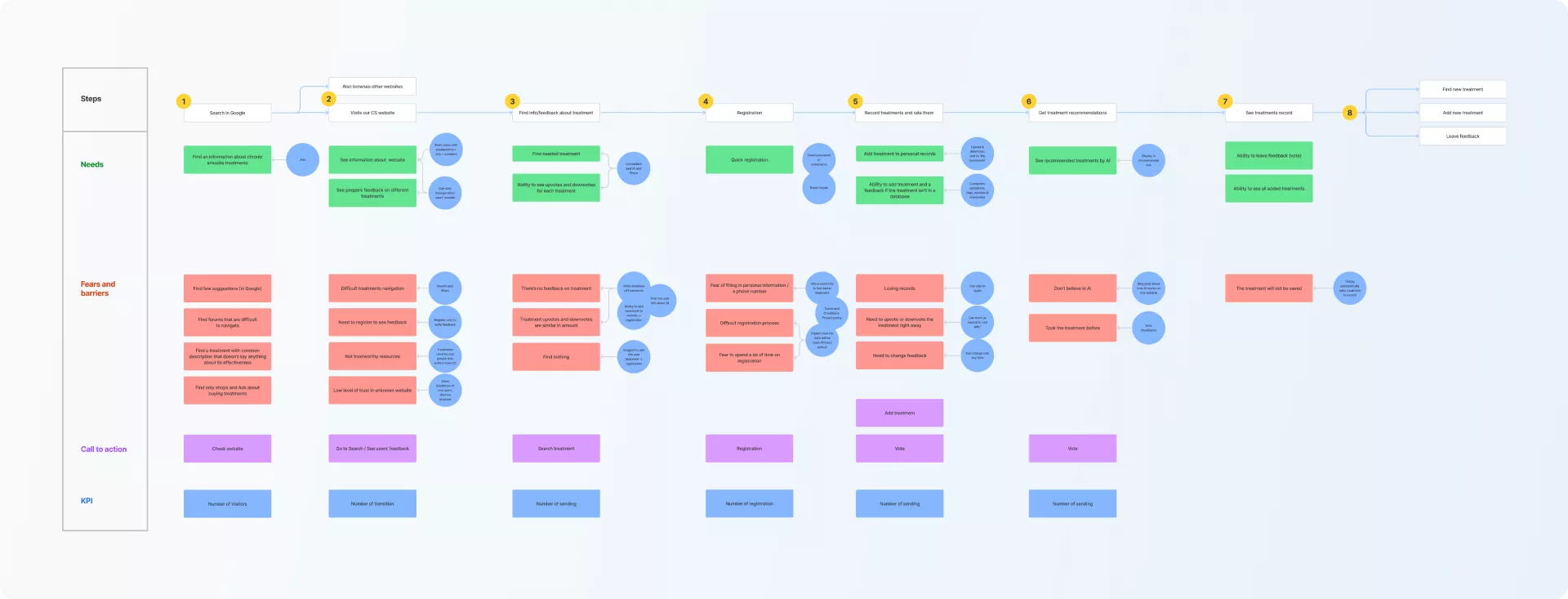
3. Prototypes
At the prototyping stage, the designer implemented all solutions in a visual form. First, we defined the main screens of the future service and represented the initial structure of each page. Based on the results of the Lean Canvas Model and CJM, the designer creates the UX part of the design, places the content in relation to the design laws, and builds the navigation. After receiving the first results, we planned demo calls with the client to get their feedback for further work. Thus, we get the initial appearance of the future service, namely the embodiment of the idea in a visual form.
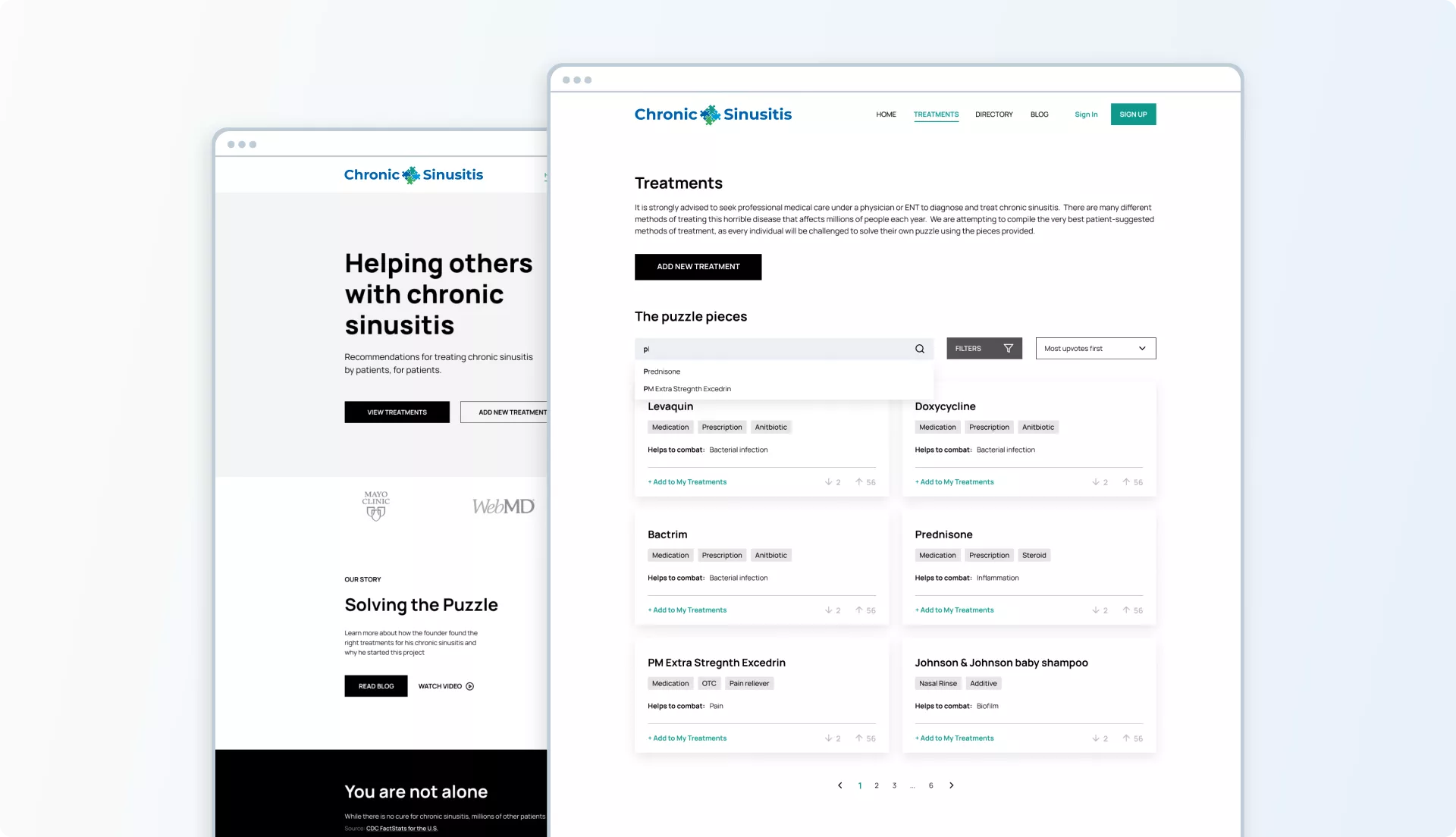
Design
After gathering all the results from the UI and UX research, we implemented a brand new, modern design in Figma for web and mobile versions.
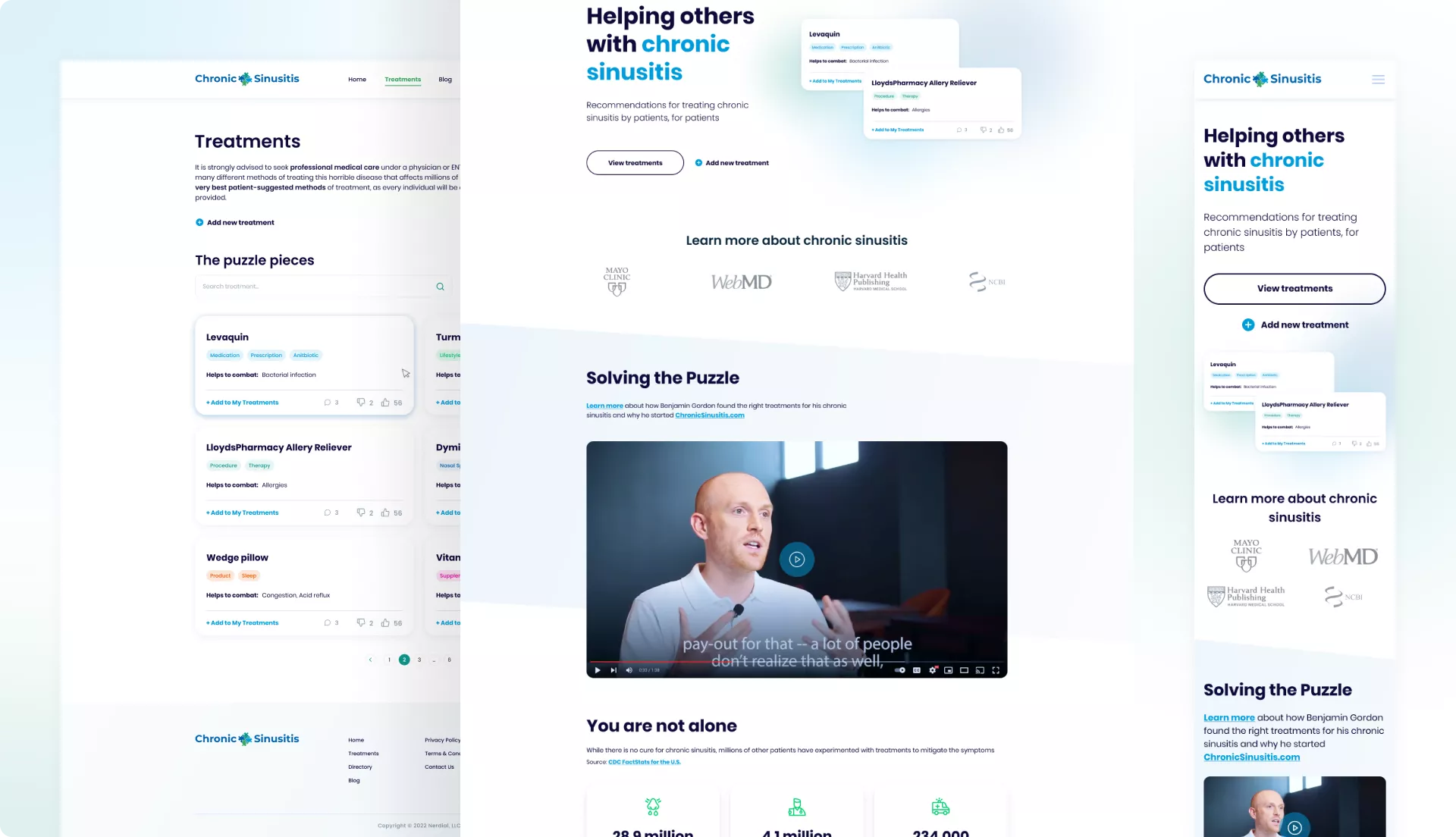
Result
A functional website with a clear UX and user-friendly design, featuring an admin panel for user management and control
Cast:
 Viktoriya
ViktoriyaProject Manager
 Andriy
AndriyFrontend Developer
 Vadym
VadymSystem Administrator
 Vitalii
VitaliiBackend Developer
 Oleksandr P.
Oleksandr P.Frontend Developer
 Iryna
IrynaQA

